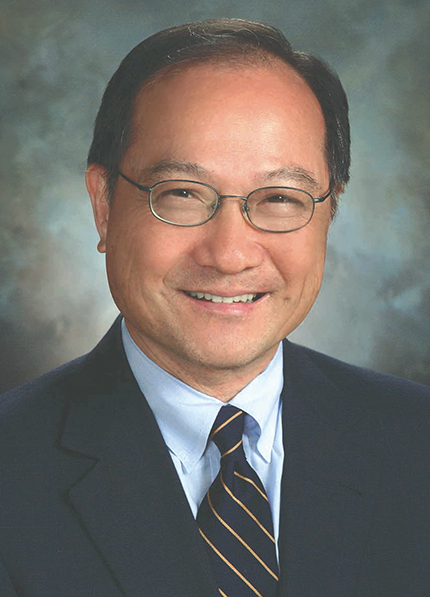Kwok-Yung Lo
DOI: 10.1063/PT.3.3669
Radio astronomer and physicist Kwok-Yung “Fred” Lo was born on 19 October 1947 in Nanjing, China. The third of six sons, he grew up in Hong Kong, where his father had moved his antique business in 1949 in search of better opportunities. Fred came to the US in 1965 to attend MIT, where he earned his BS in 1969 and a PhD in 1974, both in physics. His thesis, titled “Interstellar microwave radiation and early stellar evolution,” was supervised by radio astronomer Bernard Burke.

Kwok-Yung Lo
NATIONAL RADIO ASTRONOMY OBSERVATORY

Fred’s postdoctoral years were spent in California, first at Caltech starting in 1974 and then as a Miller Fellow at the University of California, Berkeley, in 1976. He returned to Caltech as a senior research fellow in 1978, and he was appointed as an assistant professor of astronomy in 1980. Fred’s wide-ranging research interests included cosmology, the galactic center, megamasers, star formation, and starbursts. With Burke and others, he spearheaded very long baseline interferometry (VLBI) studies of H2O and OH maser-emission regions. He also led the first VLBI effort to detect compact structure in Sagittarius A*, the radio source associated with the supermassive black hole at the center of the Milky Way. His numerous other VLBI studies of Sgr A* involved many collaborators.
At Caltech’s Owens Valley millimeter-wave array, Fred was instrumental in refining its science goals, testing the array, and conducting the first observations as it began operation. He led the team that produced the first millimeter-wave interferometric map of carbon dioxide emission from another galaxy, IC 342. At the same time, working with Mark Claussen, he was the first to suggest that the luminous water maser emission from external galaxies is circumnuclear, is affiliated with active galactic nuclei, and could serve as a high-resolution probe of those nuclei. Their insights became the foundation for the Megamaser Cosmology Project.
Fred joined the University of Illinois at Urbana-Champaign’s (UIUC’s) astronomy department as a full professor in 1986. There he established a millimeter and submillimeter receiver laboratory in collaboration with UIUC’s solid-state-physics program. That partnership produced the first superconductor-insulator-superconductor junctions used in the Berkeley-Illinois-Maryland Association millimeter array. A similar UIUC–University of Chicago collaboration led to the development of novel receivers for the South Pole Telescope. Later, as chair of the astronomy department, and conscious of a critical need to increase interest in astronomy among freshman students, Fred developed a course in which students visited professors’ homes to discuss hot topics in astronomy and astrophysics in an informal atmosphere. He was also aware of the benefits of greater diversity and made considerable efforts to increase the representation of women on the UIUC faculty.
Fred left UIUC for Taiwan in 1990 to join the core group that founded what became the Academia Sinica Institute of Astronomy and Astrophysics (ASIAA). Among its other cofounders were Paul Ho, Typhoon Lee, Frank Shu, and Chi Yuan. Fred was deeply committed to the institute and served as its director from 1997 to 2002. During his leadership of ASIAA, Taiwan’s participation in some of the most important radio astronomy projects around the globe expanded remarkably. In 1998 Fred was elected as an ASIAA academician and appointed as a professor of physics at the National Taiwan University.
Fred became director of the National Radio Astronomy Observatory (NRAO) in September 2002 and served until May 2012. During his tenure, the NRAO completed the rebuilding of the 1970s-era Very Large Array as the much more powerful Karl G. Jansky Very Large Array. At the same time, coordinating with international partners, Fred managed the North American share of both the construction of the Atacama Large Millimeter/Submillimeter Array and the startup of its science operations.
Starting in 2014, Fred became an adviser to Astron Solutions Corp, a company founded by Frank Shu that aims to mitigate climate change by using molten-salt technology. Having grown up in Hong Kong, Fred had many friends and influential contacts in both the academic and private sectors; he was especially effective in connecting Astron to potential research and commercial partners. With a ready smile and a cheerful demeanor, Fred was welcome wherever he went.
Although he often began the day with Tai Chi, Fred was more given to action than meditation. He was a continual source of ideas and grew impatient when they were not promptly achieved. You knew where you stood with Fred, what he thought, and why. Even though he pushed his colleagues hard, no one questioned his motivation—excellence in science. He would ask piercing questions during meetings and discussions, but in private—particularly with younger researchers—he would patiently provide clarification. Sadly, he had no time to pursue his long-held dream of uniting all the major observatories of pan-Pacific countries into one international organization. Fred died on 16 December 2016 in Charlottesville, Virginia, of complications from lung cancer.
More about the Authors
Paul A. Vanden Bout. National Radio Astronomy Observatory, Charlottesville, Virginia.
Anneila I. Sargent. California Institute of Technology, Pasadena, California.
